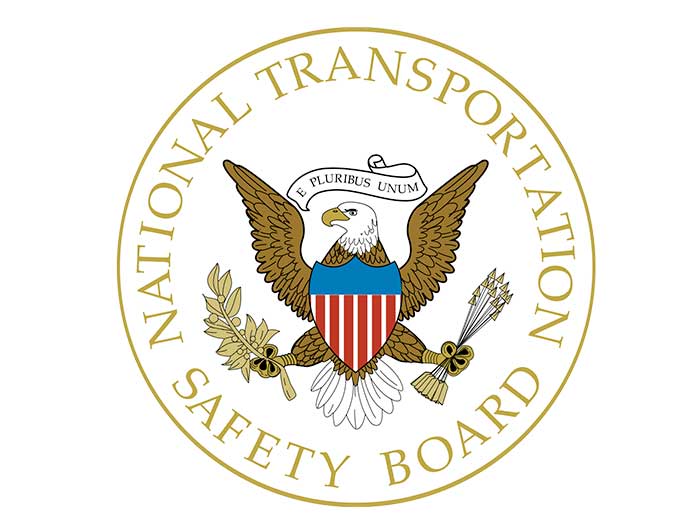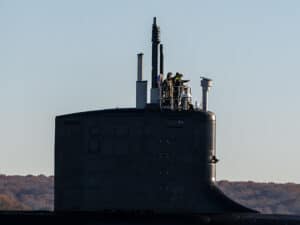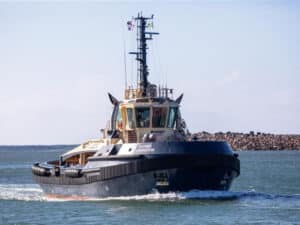
Wrong size bearing led to $1.1 million OSV engine room fire
Written by Nick Blenkey
An offshore supply vessel (OSV) engine room fire last year was caused when an incorrectly sized bearing led to an engine failure, the National Transportation Safety Board says.
On May 27, 2022, the offshore supply vessel Ocean Guardian was conducting a sea trial in Shilshole Bay in Puget Sound when its no. 3 diesel generator engine suffered a mechanical failure, resulting in an engine room fire that caused $1.1 million in damages. No injuries or pollution were reported.
The full NTSB report notes that the Ocean Guardian, a 260.8-foot-long, steel-hulled OSV, was built in 2003 as the Ken C. Tamblyn. In March 2020, the vessel was purchased by Ocean Guardian Holding and renamed Ocean Guardian; the vessel was operated by Stabbert Maritime Group.
The multi-service vessel was powered by four Caterpillar model 3516B 16-cylinder diesel-engine-driven main generators, each producing 2,669 hp. The main generators supplied electrical power for both propulsion motors and the electrical system for other vessel services. For electrical power while moored, the vessel was equipped with a 496-hp auxiliary diesel-engine-driven generator. Two 2,200-hp azimuthing stern thrusters (360° rotatable pods) provided the vessel with propulsion, supplemented during maneuvering operations with two bow thrusters (one tunnel and one retractable azimuthing unit). The vessel was outfitted with a dynamic positioning system. which allowed the vessel to hold station when operational.
In August 2021, the Ocean Guardian arrived at the operating company’s shipyard in Ballard, Wash., near Seattle, for maintenance. During the maintenance period, a shelter deck was added over the aft working deck, two cranes and an A-frame were installed, and additional accommodation spaces were added to the vessel. In January and February 2022, local factory-trained technicians conducted maintenance on all four main diesel generator engines, including top-end overhauls and bearing inspections and replacements as necessary.
In May 2022, the crew performed operational tests of the engines and propulsion control systems at reduced loads while the vessel was moored. In order to perform full function tests of these systems at underway operational loads, the vessel needed to operate in open waters. The operating company scheduled a sea trial during the week of May 23 to test the vessel’s engines, propulsion systems, and automatic power management system to ensure proper operation.
On the morning of May 27, the captain held a safety meeting with the 22 crewmembers and contractors on board and discussed details about the sea trial, including muster locations and responsibilities in the event of an emergency. At 1145, because the vessel’s propulsion system had not been fully function tested, two tugboats towed the Ocean Guardian away from the shipyard and out of the harbor through the Ballard Locks to Shilshole Bay for the sea trial. About 1245, the captain released the tugboats and requested that one of them remain nearby to “shadow” the Ocean Guardian; the other returned to port.
About 1400, the crew began the trials by testing the functionality of the two bow thrusters. After successful operation of both thrusters, the two stern thrusters were slowly loaded up to about 75% of rated power each. As the electrical load increased on the diesel generators, the crew tested the automatic power management system by setting up selected engines to automatically start, stop, and share the electrical load. The chief engineer stated that the engines were loaded to about 60% of their rated output throughout the trials.
LARGE BANG
At 1435, with the two stern thrusters about 75% load, and the no. 3 main engine about 30% load, the engineering crew in the engine control room (ECR) heard a “large bang” and observed smoke in the engine room through the ECR window. An engineer in the engine room saw flames near the no. 3 main engine and stated they “looked to engulf most of the engine.” Crewmembers on the bridge witnessed “heavy smoke from the stack area.” According to the crew, up until this point, there had been no abnormal alarms observed on the engine monitoring system. The no. 3 main engine had been operational for about 4 hours in total since the January-February overhaul.
The crew extinguished the fire using the vessel’s carbon dioxide fixed fire-extinguishing system and the full NTSB report gives more details of the subsequent events and the extent of damage suffered by the vessel — which included that the no. 3 main engine was damaged beyond repair.
UNDERSIZED BEARINGS
In its summary of the report the NTSB says that investigators found that the no. 3 main engine’s main bearing journals had been machined down to a smaller diameter, and undersized bearings were installed at some point prior to the 2022 maintenance.
During the 2022 maintenance, says the NTSB, service technicians did not identify the bearing’s part number on the service report and replaced it with a standard-sized one. The bearing’s incorrect size allowed lube oil to leak from the larger clearances of the bearing. The decreased lube oil supply pressure resulted in a rapid temperature increase of the connecting rod bearings and multiple engine components breaking free while the engine was running.
The NTSB determined the probable cause of the mechanical failure of the no. 3 main engine and resulting fire aboard the Ocean Guardian was the replacement of a crankshaft main bearing with an incorrectly sized bearing during an engine overhaul due to the engine service technicians not identifying the removed bearing’s part number, which resulted in the loss of lube oil pressure in adjacent connecting rod bearings.
“When maintenance is performed, correct replacement of machinery components is critical to ensuring safe and reliable vessel operation,” the report said. “Vessel crews and equipment manufacturer technicians should carefully identify and document part numbers of all components removed from shipboard equipment. Tracking systems are an effective form of record-keeping that can be used to ensure proper replacement part selection for reinstallation.”
Following the engine failure and fire, the local Caterpillar service company switched to a new service tracking system that allows technicians to upload pictures and reports on their cell phones to improve documentation and information sharing between technicians.
Download the full report HERE




